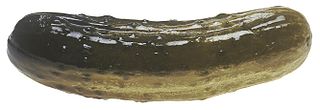Pickling in Python can be dangerous.

That’s where Quickle comes in — as long as you’re using Python 3.8 or later…

Pickling in Python can be dangerous.

That’s where Quickle comes in — as long as you’re using Python 3.8 or later…
Recently, I was able to attend Martin Grohe’s talk on The Logic of Graph Neural Networks. Professor Grohe of RWTH Aachen University, is a titan of the fields of Logic and Complexity theory. Even so, he is modest about his achievements, and I was tickled when it was pointed out to me that the theorem he refers to as “a little complex”, one of his crowning achievements, involves a four-hundred page long book of a proof.
The theorem relates to the Weisfeiler-Lehmann (WL) algorithm, an algorithm for determining whether two graphs are equivalent (i.e. isomorphic). The algorithm has deep connections with combinatorics, complexity theory and first order logic. A system of logic that is remarkably similar to the relations present in ontologies such as the Gene Ontology (GO), which is commonly used to compare and predict protein function. Kernelised methods and other WL-based metrics present a new and possibly logically “complete” way to potentially compare the functions of proteins and infer their similarity.

Welcome! Take three deep breaths, each time expel the air through your nose with force. Now you are ready for this adventure. Let us dive right in and reflect on the premise of this blog post.
I, personally, dislike the word “solve”. What does it even mean? And that is already the second time I have used that word. The word solve implies all kinds of nonsense, such as completion or the existence of a solution. Let us recast it as: new insights, positive reframing or simply “ah-ha!”. These “problems” can be anything too: emotional ones (external or internal), scientific or research ones, artistic ones, writing ones. If you feel like it, just call it a problem.
Whoever is writing this blog post, he certainly does talk a lot … We should really get going or we will run out of time. You know what, let us start again. Welcome to:
Continue reading